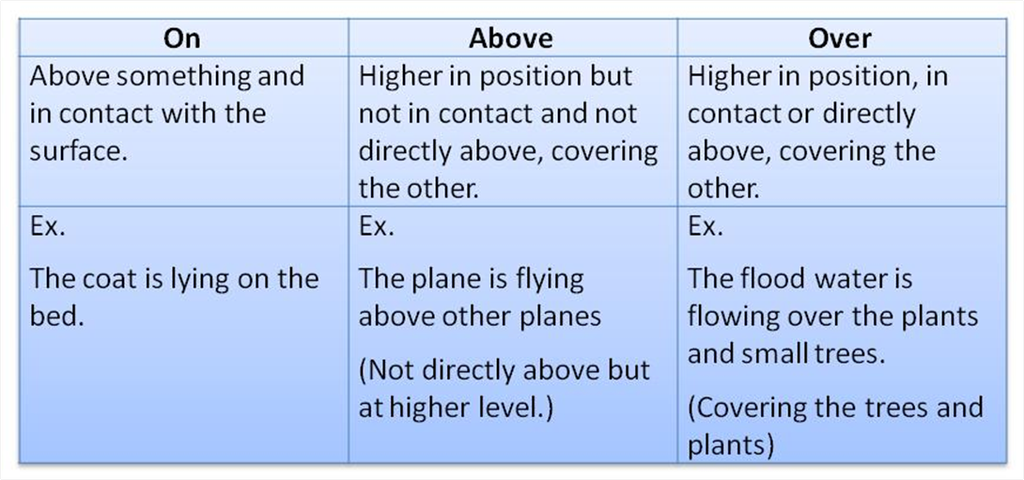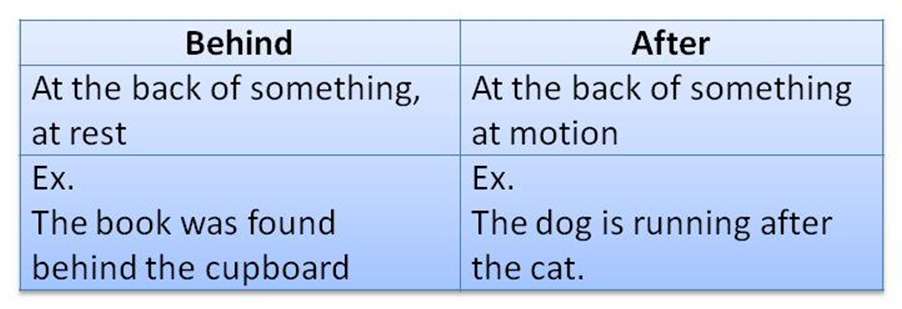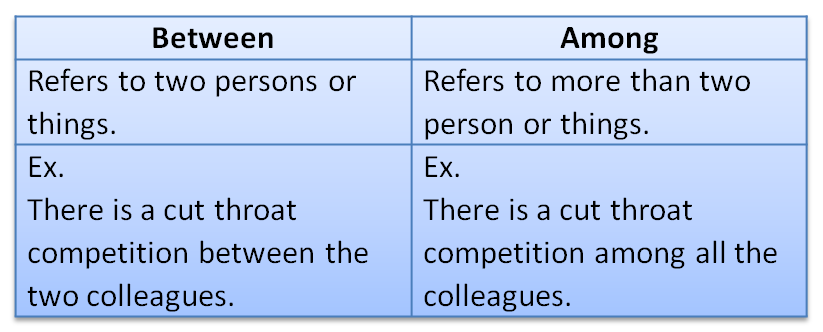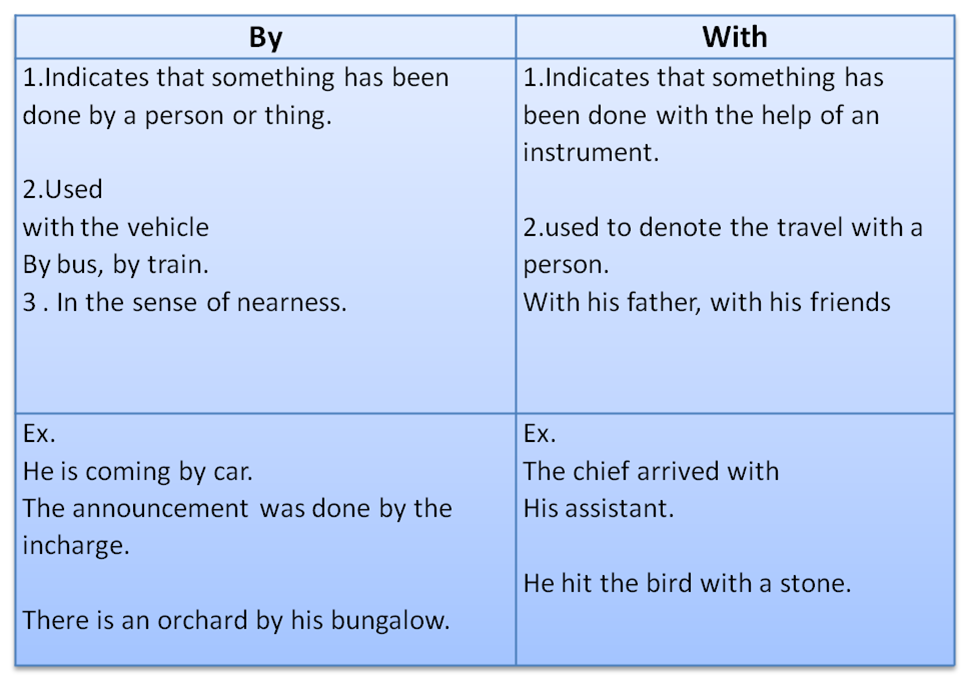- Books Name
- Online English tutor English Book
- Publication
- Online English tutor
- Course
- CBSE Class 10
- Subject
- English
Preposition
Preposition is a word or group of words that relates a noun/ pronoun to another noun/ pronoun in a sentence and give it a complete sentence.
It denotes the time, place or position of the particular noun which is governed by it.
It is generally placed
- before a noun or pronoun it governs.
- at the end of some exceptional cases.
Ex.
Preposition placed before a noun
- The jug is on the table.
- The jug is under the table.
- The jug is near the table.
Each of the preposition on, under and near, in the above sentences relates the position of the jug with respect to the another noun the table and giving a meaning to the sentences.
Conditions when a preposition is placed at the end of the sentence.
- If a preposition governs a relative pronoun or an interrogative pronoun
- When the relative pronoun is that.
- When the relative pronoun is understood.
- When the preposition is used with an imperative.
Ex.
- This is the pen, I was looking for.
- The pen is to write with.
Using the preposition is an art which requires clear concept and practice.
One preposition can be used for many contexts.
For e.g.
By
- There is a park by my house.
(Here, ‘by’ refers to nearness)
- He has arrived here by bus.
(by is always used with the vehicle to show the travel)
- The letter was written by me.
(show the action done by someone in passive)
Prepositions of Time
Prepositions of time denote the time of an action of a noun or pronoun in a sentence.
Prepositions of time are basically
"in," "at," “ during”, “for” , “since" , “By" “ within” "on" , till , until.
In - for period of time (month, year, parts of a day, season, weather, Climate.
Ex.
- In the evening,
- In the morning
- In the April
- In 1990’s
- In decades of 70- 80’s
- In the rainy season
- In the bad weather
- In the humid climate.
On – for date, occasions, week days etc.
Ex.
- On Saturday night
- On 15th December
- On your birthday
At- for fixed time of clock or day time, for festivals coming every year.
Ex
- At 3.30 pm
- At sunset
- At noon
- At dawn
- At Christmas
- At Diwali
By- to denote at the certain time or before that time.
Ex.
- We shall finish our work by 4 pm.
( at 4 pm or before it)
- You have to report by 8 am.
During- for a known period of time.
- During the summer
- During holidays
- During 80’s
- During his old age.
- We visited our grandparents during summer.
Within – used to denote before the end of the given period.
Ex
- He may arrive within an hour.
- We shall reach within 5 minutes.
For – used with a period of time (in perfect or perfect continuous tense)
- He has been waiting for you for 2 hrs.
Since- used for a point of time in (perfect or perfect continuous tense)
Ex.
- I had been suffering with fever since last night.
From – used to denote point of time and can be used in any Tense.
Ex.
- He runs this shop from morning till night.
Difference between After and In

Difference between in and within

Till / until – up to the specific time of something.
- He fought bravely till his death.
- I will wait till the end of the meeting.
- We had been at the station until the train comes.
Preposition of place
Used to refer place or location of any noun
- At – used for small places and specific locations (an address or certain point I.e. at the top
Ex.
- At the bus stop.
- He lives at Dwarka in Delhi.
- He might be at the library in the school premises.
- In – used for big places, to denote location of a noun inside another noun (at rest)
It is also used for movement inside something
Ex.
- My pen is in my bag.
- The cat is in the kitchen.
- In a country
- In a big city
- There is a big shop at the corner in a square.
- He lives at Delhi in India.
(When in or at used together in used for larger area and at is used for smaller area)
On – used to denote the noun on the surface of other generally in touch and at rest
- The book is on the table.
- The cat is sitting on the cupboard.
Upon – used to denote the position of a noun on another but in movement.
Ex
The wolf sprang upon the goat.

Over – denotes higher in position, in contact or directly above.
- The plane is flying over the building.
- Dark clouds are floating over the hills.
Above- denote higher in position but not in contact or covering
- Rate of these apartments has raised above than other ones of this locality.
- These hills are 800 meters above the sea level.

Below, Beneath, Under
Below – (opposite of above) at a lower level than somebody/something and not in contact.
- That Valley lies 800 meters below the mountain.
- Everything is looking too small below this high apartment.
Under-
- (Opposite of over) below the surface of something;
- covered by something or lower in amount, authority, quality or degree.
- Sill many victims are buried under the damaged building.
- Under his guidance of his boss he has got a lot of experience.
Beneath - under the surface of other thing, invisible suitable things as covered wholly, hidden emotions or aspects, for not for anyone .
- Many find themselves having to take jobs far beneath them.
- The dry grass is producing crunching sound beneath his feet.
Behind / After

Prepositions of movement
show movement from one place to another place include:
to, toward, into , onto, across , through, off, along, around , up, down, from
To- used to indicate certain destination.
At the time of showing preference.
- She is going to Delhi.
- During winters, many families migrate to the valley .
Towards- used to indicate the direction of movement.
- The ship is moving toward north east to reach the continent.
- He ran toward the basement to escape from the robbers.
Into – movement from outside to inside or to change from one form to another
- The cat ran into the kitchen to chase the rat.
- He dived into the water.
Onto – movement to the surface from higher position.
- The dog jumped onto the mirror seeing the reflection of cat.
Across – indicate the movement from one side to the other side of it.
- He went across the bridge, in the beautiful garden.
- He went across the pond by boat.
Through – movement from one side to another side of something in enclosed area.
In the sense of by the mean of something.
In the sense of facing something.
- I got scared while the train was moving through the tunnel.
- While walking through the woods, she met a dwarf.
Over – indicate the movement at the higher position.
- The boy jumped over the walls and ran away.
Along- parallel movement in the same line of something for long distance
- The thief was moving along the wall to get chance to enter the house in dark.
- It was a pleasing moment to walk along the river bank.
From – for the place from where the movement starts.
- The bus is going from Delhi to Goa.
- When will this long journey from the England to Russia end?
Up/ down
Up - movement to higher position
Down - movement to lower position
- He went up stairs.
- The glacier water comes down from mountain ranges to plains.
Around – movement in circles.
- Why is the honey bee moving around my head?
- The electron revolves around the nucleus of an atom.
Off – used For
- separation or disconnection
- indicating to remove attire.
Ex.
- The apple fell off the tree. (Separated from balcony)
- He turned the TV off to get relief from the cold. (Appliance disconnected from the power)
- They took the wheel off the car.
- The wind blew the clothes off the balcony. (Separated from balcony.
Preposition ‘of’
Of is used to show that a noun belongs to something.
Ex.
- He is after the property of his grandparents.
- The collections of this shop are wonderful.
- The small district of this area is beautiful.
Beside/ besides

Between / Among

By / with


 Online English tutor
Online English tutor
